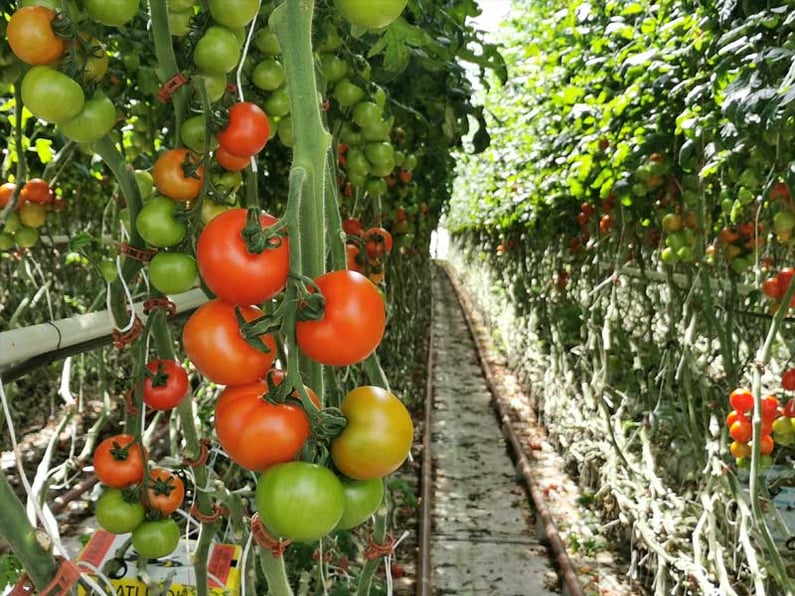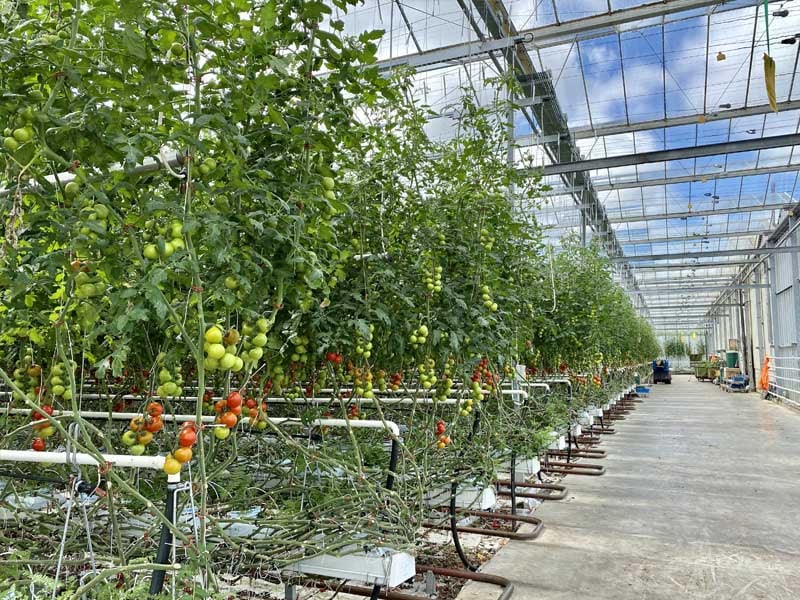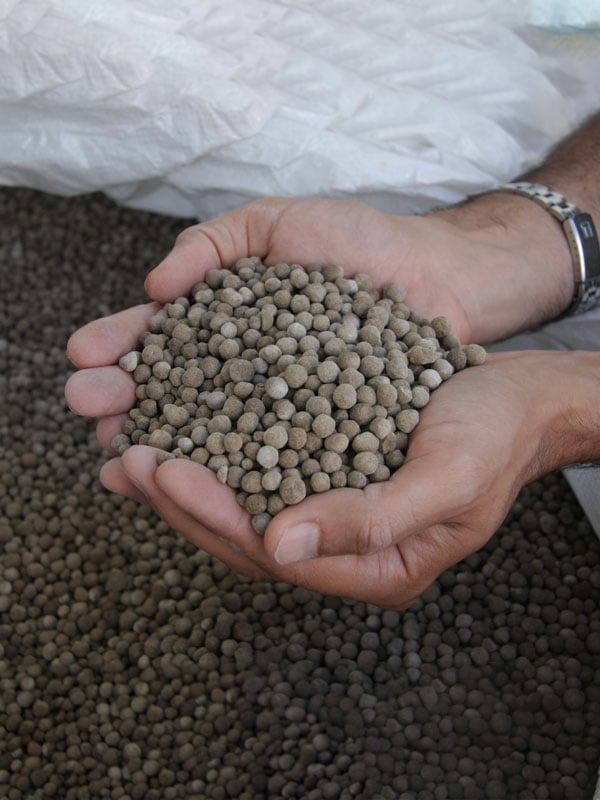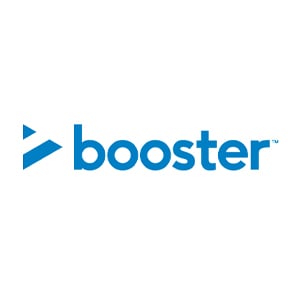The Booster Innovation Fund helps Kiwi’s invest in early-stage companies founded on cutting edge innovations being developed right here in New Zealand.
We chatted to Tijs Robinson, Chief Growth Officer, of Hot Lime Labs, a Wellington-based clean tech company, offering the sustainable solution of a socially-conscious, renewable source of CO2 and heat.

The Lab is just one of the early-stage tech Kiwi companies in the growing Booster Innovation Fund (BIF) portfolio, who are breaking new ground by challenging industrial norms with trailblazing ideas in the areas of medicine, science, the environment and more.
Hot Lime Lab’s creation of a system that converts locally-sourced wood waste into what they describe as clean CO2 is grabbing the attention of commercial greenhouses, desperate for a renewable and greener source of the gas. This system can also increase crop productivity and growth, so it’s no surprise this type of clean-tech solution is in huge global demand within the greenhouse sector.
This sustainably savvy approach of using a resource that would otherwise be wasted to create CO2 could see a replacement of more commonly used sources like fossil fuels. The system’s burning of forestry residues – and soon, vines and other waste from the greenhouse itself – are also carbon-neutral and not subject to rising Emissions Trading Scheme (ETS) costs.

|
But we’ll let Tijs tell you a bit more about this exciting green response led by this month’s BIF’s Bright Sparks Q&A... |
Who are Hot Lime Labs and what do you do?
Tijs: We like to say we put the “green” back in the greenhouses! We make a key nutrient for large commercial greenhouses (carbon dioxide - CO2) that lets growers change to renewable and boost their yields and profits in the process. Specifically, we allow growers to shift away from the traditional fossil fuel-based sources of CO2 (burning of natural gas and liquid CO2 from the fossil fuel refining process are most commonly used). When we talk about greenhouses, we’re talking about incredibly productive operations that can be dozens of hectares in size, growing thousands of tons of fruit and vegetables a year in a high-tech growing environment.
Tell us a bit about the Hot Lime Labs team!
Tijs: Hot Lime was established in 2017. The company kicked off with just three people, working out of Vlatko’s [Dr. Vlatko Materić, Hot Lime Labs Founder and CEO], living room. Today we have grown to a team of 18 people with a full-scale premises consisting of several engineering bays, offices and lab space – bit of a change in such a short period of time!
How did Hot Lime Labs start and what was it in response to?
Tijs: The technology was initially developed for the power industry to capture CO2 from chimneys but there was no commercial pull – financially or any social incentive – for the technology in this sector. At that time the power industry was not willing to pay to reduce their emissions and become cleaner.
They had no incentive to reduce emissions and did not want to put money into doing something simply to benefit social good. So, “wandering in the wilderness”, Vlatko, by chance, visited a greenhouse one day, where they asked the question: “We need affordable, clean CO2 as it can boost production by up to 25% – can any of you help?”. They were losing 20% productivity as they couldn’t afford their current CO2. When Vlatko looked into this more, he found there was a vast unmet demand for clean CO2 for greenhouses.
Now, here we are five years later, and our first customer happens to be the same customer – NZ Gourmet – who started that journey with Vlatko. We will shortly be helping them increase revenue by rolling out our systems to regain that 20% – and, hopefully in the process, help save the world!
Where does the name Hot Lime Labs come from?
Tijs: The core magic of our system is a patented limestone material that works at 600°C and above – thus the Hot Lime part. This core technology has a range of future possibilities beyond greenhouses and CO2, so this is just the first product out of the “Lab”.
Is this the first clean-tech system of its kind?
Tijs: The system is built around the patented Hot Lime pellets. It is one of the first of its kind with the ability to extract clean CO2 from waste biomass. We cannot say with certainty that it is the first of its kind, but it’s likely one of the first!

|

|
What would you say has been one of Hot Lime Lab’s biggest achievements to date? What is the team most proud of?
Tijs: Aligning really good science with challenging commercial problems is a massive achievement – doing half the equation is easy but doing both is very hard – especially when your solution involves large pieces of hardware! We have managed to crack this. To date, we have scaled up the technology a factor of 20,000 times – from lab to a successful pilot unit. Our first commercial system is pre-sold and set to be installed at a greenhouse by the end of the year. We have just finished the build and have started the first stage of testing at our HQ – this is a huge achievement!
What exciting things have you got planned next?
Tijs: The next biggest step in our journey is getting the first commercial system working on site at Gourmet Mokai. This will be a massive milestone for us. After that… world domination, one Hot Lime system at a time!
We have started looking into a byproduct of our process with exciting potential - called char or biochar. Biochar is a fantastic way to remove carbon from the atmosphere and bury it in the ground for hundreds if not thousands of years - meaning we could essentially create carbon negative hubs centred on greenhouses with our technology. Watch this space!
Can you help other food and beverage industries who are also looking for more affordable and sustainable sources of CO2, such as the craft beer industry and supermarkets with packaged chicken?
Tijs: Our focus is currently on fulfilling greenhouse demand for CO2. However, we are looking into the possibility and requirements of producing food grade CO2 as there is enormous demand for this not just in New Zealand but around the world.
Do Hot Lime Lab’s gasifiers burn solely wood waste or will it work with other waste too?
Tijs: The core input for our gasifier is currently waste wood. But we have shown we can use tomato crop waste (currently a big headache for a lot of greenhouses), and we will be broadening this to general green waste in the near future.
Thanks for the Hot Lime lowdown, Tijs! It’s great to see all the incredible, clean, green things the Lab is achieving, and helps gives investors the opportunity to see how they can support and grow exciting, innovative Kiwi companies through the Booster Innovation Fund.
Tijs: The support through BIF has helped us get our first system into market. It is a huge undertaking getting a large piece of mechanical equipment market ready. And we certainly can't do that without the support of our shareholders along the way. We’ll need more capital as we accelerate our growth, and Booster’s ability to support future capital needs, itself – and through aligned partners – will be a huge boost to our future success!
New Zealand is a country full of bright sparks, so creating Kiwi-centric investment funds for Kiwi investors was a bit of a no-brainer for us.
We have multiple ways of investing in New Zealand – through the Booster KiwiSaver Scheme, or through one of our specialist investment funds like the Booster Innovation Fund
-
Read more about the Booster Innovation Fund (BIF) and some of the exciting companies it has invested in to advance early stage innovation – and see how you can support these young companies originating right here in Aotearoa.

